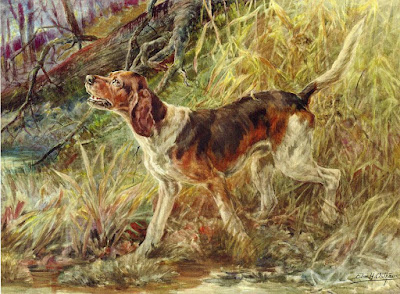It's important to notice the different parts of the tree: trunks, limbs, branches and twigs. These follow a certain growth pattern. One example is how the limbs attach to the tree. Branches are heavy and have a base to support them. There are usually a high number of branches and twigs. Also branches always divide in two at the ends.
Look carefully and you will see that the thicker the limbs are the darker they become. Pick a major limb and follow it until its end. See how the value lightens in the same proportion, as it becomes thinner until they practically become invisible by merging with the sky. Obviously it will be too overwhelming to paint every limb and branch that a real trees has. As always artists must simplify.
It's also important to notice that branches never grow straight. They form nice angles that give them their character. Some trees have more gnarled branches than others. Another point to consider is the angle of the tree branches as they split form the larger limbs. The lower the branch the more open the angle. As the tree goes higher the angles tend to close.
Consider the following:
- Make sure both sides of a limb don't run straight and parallel to each other and/or other limbs.
- Make them look round by lightening the value where the light hits and rendering reflected light.
- Consider that some branches project outward towards you and farther from you, the latter would lighten in value even if the branches were thick.
- Limbs will cast shadows onto each other on a sunny day.
- Add character by putting in cut off limbs, squirrel holes, bark peeling off, leaves that didn't fall, a bird's nest, etc.
- The shadow side will pick up some reflections from the sky. Add touches of sky color to this area.
- Variegate the color of bark. Even though in nature their color seems to be a brownish gray add blue combines with siennes, umbers, ochers, reds, even green moss. Mix these colors on the paper instead of the palette.
- Preferably don't allow your tree to shoot up straight. A leaning tree is more interesting. Make sure it leans into the picture.
- At the top of the tree there are many little branches, many more than at the bottom.
- Don't allow the tree shape to fit into any geometrical shape such as ovals, circles, triangles (for pine trees) etc.
- Don't overdo the amount of branches. Open areas are good for breathing space.
- Some branches break off during their life span.
- Snow stuck to branches is a lovely sight.
Today's artist find is Edmond Henry Osthaus.
Have a great week,
Danielle

No comments:
Post a Comment
Would love to hear from you:
Note: only a member of this blog may post a comment.